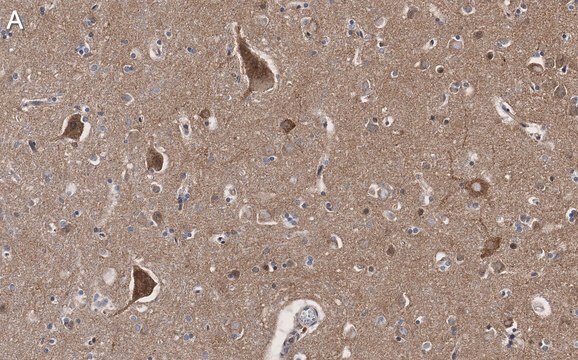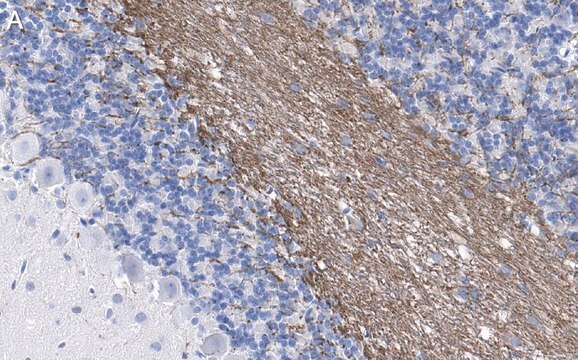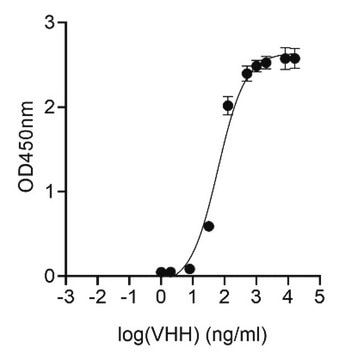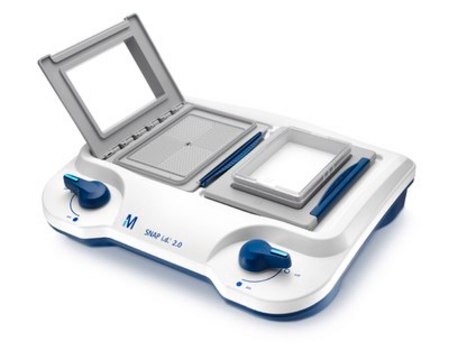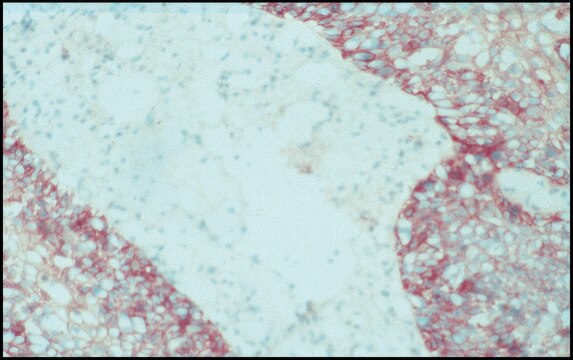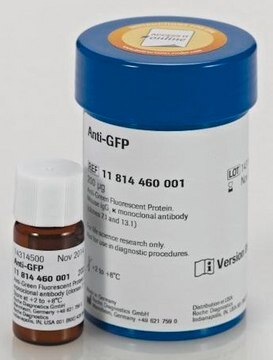General description
We are committed to bringing you greener alternative products, which adhere to one or more of The 12 Principles of Green Chemistry. This antibody is Preservative-free, produced without the harm or sacrifice of animals and exceptionally stable to allow for ambient shipping and storage if needed and thus aligns with "Waste Prevention", "Designing Safer Chemicals" and "Design for Energy Efficiency".
Click here for more information.
ZooMAb® antibodies represent an entirely new generation of recombinant monoclonal antibodies. Each ZooMAb® antibody is manufactured using our proprietary recombinant expression system, purified to homogeneity, and precisely dispensed to produce robust and highly reproducible lot-to-lot consistency. Only top-performing clones are released for use by researchers. Each antibody is validated for high specificity and affinity across multiple applications, including its most commonly used application. ZooMAb® antibodies are reliably available and ready to ship when you need them.
Specificity
Clone 113-1 is a ZooMAb® mouse recombinant monoclonal antibody that specifically detects a 60 kDa non-glycosylated mitochondrial protein. protein..
Immunogen
A semi-purified mitochondrial preparation.
Application
Quality Control Testing
Evaluated by Western Blotting in HeLa cell lysate.
Western Blotting Analysis: A 1:10,000 dilution of this antibody detected a non-glycosylated mitochondrial protein in HeLa cell lysates.
Tested Applications
Western Blotting Analysis: A 1:10,000 dilution from a representative lot detected a non-glycosylated mitochondrial protein in HepG2 cell lysate.
Immunocytochemistry Analysis: A 1:1,000 dilution from a representative lot detected a non-glycosylated mitochondrial protein in HepG2 cells.
Immunohistochemistry (Paraffin) Analysis: A 1:1,000 dilution of this antibody detected a non-glycosylated mitochondrial protein in Human heart tissue sections.
Note: Actual optimal working dilutions must be determined by end user as specimens, and experimental conditions may vary with the end user.
Target description
Mitochondria are important cell organelles that are responsible ATP production and biosynthesis of several intermediates. They also play a major role in cellular stress responses, autophagy, and apoptosis. They are also part of a dynamic, interconnected network that is closely integrated with other cellular compartments and their function extends beyond the boundaries of the cell. They affect the physiology of the organism by regulating communication between cells and tissues. Within a cell the mitochondria are in constant motion and can move to the areas of high energy demand and may undergo repeated rounds of fission and fusion, which is important in mixing of mitochondrial matrices and redistribution of the mitochondrial DNA. As a by-product of oxidative phosphorylation, mitochondria produce significant quantities of endogenous reactive oxygen species (ROS), which can damage cellular proteins, lipids, nuclear and mitochondrial DNA. Excessive mitochondrial ROS production can overwhelm the antioxidant defenses and can cause serious damage to mitochondria and the cell. Cumulative oxidative damage and mitochondrial DNA mutations can lead to mitochondrial abnormalities that affect the health of the organism. It has been shown that mitochondria from cancer cells are often resistant to permeabilization of their outer membranes and resist apoptosis. Clone 113-1 is an ideal antibody for staining mitochondria in human cells and can be used as a mitochondrial marker in subcellular fractions. It recognizes a 60 kDa non-glycosylated protein component of mitochondria found in human cells. It is shown to produce a spaghetti-like pattern in normal and malignant cells. This ZooMAb® recombinant monoclonal antibody, generated by our propriety technology, offers significantly enhanced specificity, affinity, reproducibility, and stability over conventional monoclonals.
Physical form
Purified recombinant mouse monoclonal antibody IgG, lyophilized in PBS with 5% Trehalose, normal appearance a coarse or translucent resin. The PBS/trehalose components in the ZooMAb formulation can have the appearance of a semi-solid (bead like gel) after lyophilization. This is a normal phenomenon. Please follow the recommended reconstitution procedure in the data sheet to dissolve the semi-solid, bead-like, gel-appearing material. The resulting antibody solution is completely stable and functional as proven by full functional testing. Contains no biocide or preservatives, such as azide, or any animal by-products. Larger pack sizes provided as multiples of 25 µL.
Reconstitution
300 µg/mL after reconstitution at 25 µL per vial. Please refer to guidance on suggested starting dilutions and/or titers per application and sample type.
Storage and Stability
Recommend storage of lyophilized product at 2-8°C; Before reconstitution, micro-centrifuge vials briefly to spin down material to bottom of the vial; Reconstitute each vial by adding 25 µL of filtered lab grade water or PBS; Reconstituted antibodies can be stored at 2-8°C, or -20°C for long term storage. Avoid repeated freeze-thaws.
Legal Information
ZooMAb is a registered trademark of Merck KGaA, Darmstadt, Germany
Disclaimer
Unless otherwise stated in our catalog or other company documentation accompanying the product(s), our products are intended for research use only and are not to be used for any other purpose, which includes but is not limited to, unauthorized commercial uses, in vitro diagnostic uses, ex vivo or in vivo therapeutic uses or any type of consumption or application to humans or animals.



